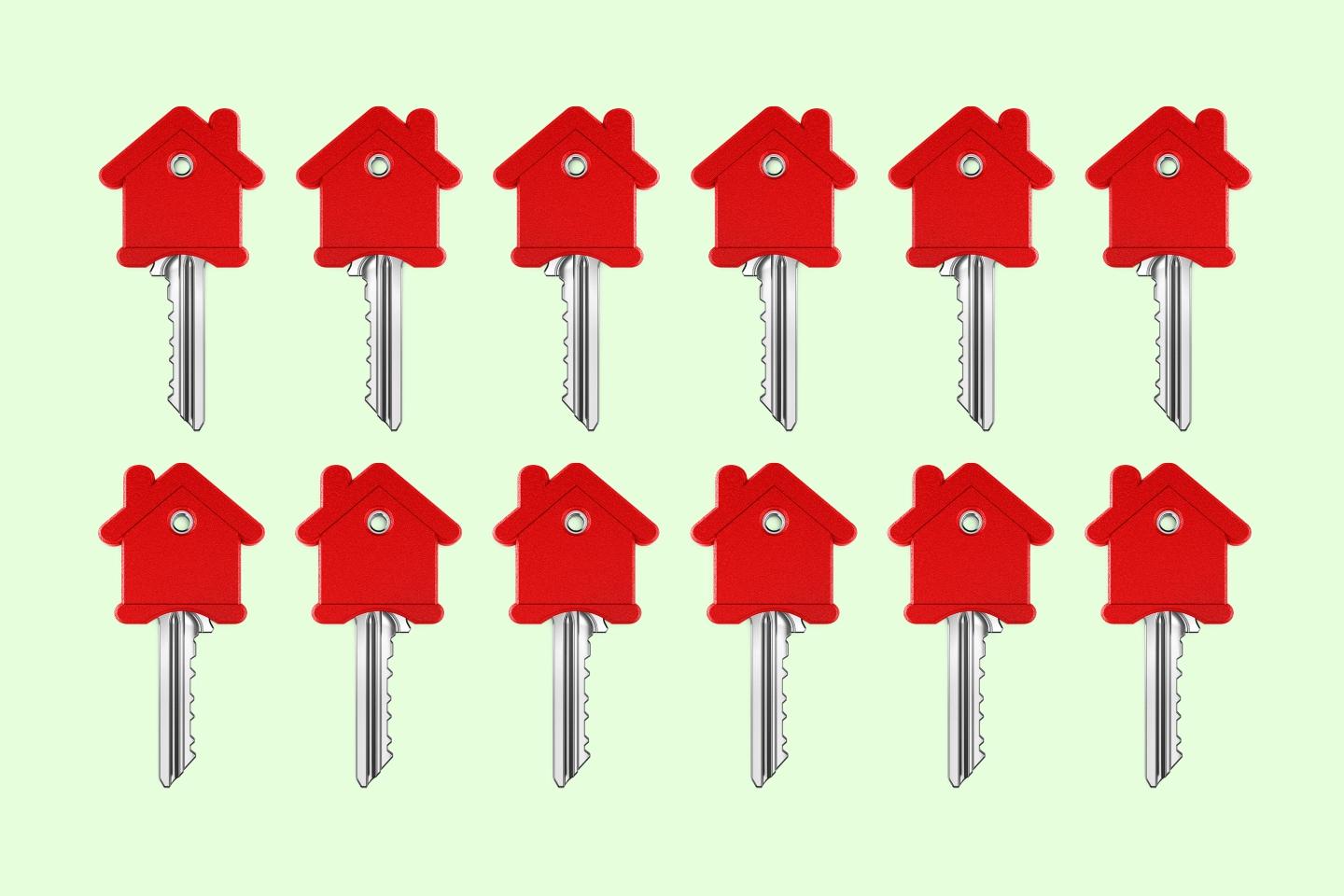
随着高抵押贷款利率持续影响美国房地产市场,购房人和卖房人都在越来越多地“买低”抵押贷款利率。
买低抵押贷款利率有不同模式,但通过2-1买低利率,卖房人一次性支付一笔资金,在第一年将购房人的贷款利率降低2个百分点,在第二年降低1个百分点。到第三年,购房人按照锁定利率支付。
ANR Finance + Real Estate的首席执行官兼登记经纪人伊凡·坦登对《财富》杂志表示:“[购房人]在第一年和第二年节省大笔资金,即使之后按照锁定利率,他们依旧能够在前两年调整好自己的财务状况。”
如果购房人购买一套价值600,000美元的房子,按照固定利率6%贷款570,000美元,月供约为3,417美元。通过2-1买低抵押贷款利率,在第一年,购房人的月供约为2,721美元(利率为4%)。第二年的月供为3,060美元(利率为5%)。因此,购房人在第一年节省了8,354美元,在第二年节省了约4,291美元。
坦登表示:“这种模式一直存在,只是过去几年无人问津,因为人们根本不需要,尤其是在2020年和2021年。但在2022年10月,[抵押贷款利率]达到7%,我们需要想办法帮助人们有能力买到房子。”
但有几件事情值得注意:购房人必须符合以完整利率贷款的资格(不同类型的贷款有不同资格要求),而且省下来的资金并不会直接落入他们的口袋。这笔资金将被转入一个托管账户,当利率下降时,这实际上对购房人有利。假如利率下降,购房人可以选择再融资并锁定更低利率,而托管账户中的资金依旧归购房人所有,能够作为信贷使用。
坦登告诉《财富》杂志:“费用由卖房人支付。而且即使你进行再融资,也不会损失这笔资金。”
你或许会想,这样做对卖房人有什么好处?毕竟根据上述情境,卖房人需要支付超过12,600美元?好处是他们可以在房地产市场下滑期间卖掉自己的房产。由于抵押贷款利率较史上最低点已经翻了近两番,而房价在新冠疫情期间的房地产市场繁荣(Pandemic Housing Boom)中上涨了超过40%,这导致市场缺乏可负担性,房地产市场目前进入回调模式。
此外,尤其是对于建筑商而言,这并非失去购房人的理想时期,因为他们需要面对与疫情相关的长期供应链中断和历史性的房产库存。HomeLoans. LA的贷款经纪人马里奥·皮内多对《财富》杂志表示,买低利率能够缩小快速上涨的抵押贷款利率之间的差异,而且有许多建筑商利用买低利率吸引购房人,以减少库存。
皮内多说:“这是一种卖房人[提供的]激励。”
他指出,相比降价出售,使用2-1买低利率对建筑商更有利,因为这种做法可以维持房产价值,并且吸引购房人。建筑商发现买低利率非常有效,因此许多建筑商提供超过两年期限的买低利率。
据约翰·伯恩斯房地产咨询公司(John Burns Real Estate Consulting)统计,截至2022年12月,美国75%受访的建筑商表示采用了买低购房人抵押贷款利率的做法,以提高房产的可负担性。一些受访的建筑商称,“任何人都需要激励”,而“买低利率和/或锁定利率最有效”,而且“100%的库存住房提供某种形式的买低利率,其力度与新房销售的优惠力度相当。”
约翰·伯恩斯房地产咨询公司负责研究业务的高级副总裁德文·巴克曼此前曾经告诉《财富》杂志,买低利率“是鼓励消费者购买新房的工具之一。”(财富中文网)
译者:刘进龙
审校:汪皓
随着高抵押贷款利率持续影响美国房地产市场,购房人和卖房人都在越来越多地“买低”抵押贷款利率。
买低抵押贷款利率有不同模式,但通过2-1买低利率,卖房人一次性支付一笔资金,在第一年将购房人的贷款利率降低2个百分点,在第二年降低1个百分点。到第三年,购房人按照锁定利率支付。
ANR Finance + Real Estate的首席执行官兼登记经纪人伊凡·坦登对《财富》杂志表示:“[购房人]在第一年和第二年节省大笔资金,即使之后按照锁定利率,他们依旧能够在前两年调整好自己的财务状况。”
如果购房人购买一套价值600,000美元的房子,按照固定利率6%贷款570,000美元,月供约为3,417美元。通过2-1买低抵押贷款利率,在第一年,购房人的月供约为2,721美元(利率为4%)。第二年的月供为3,060美元(利率为5%)。因此,购房人在第一年节省了8,354美元,在第二年节省了约4,291美元。
坦登表示:“这种模式一直存在,只是过去几年无人问津,因为人们根本不需要,尤其是在2020年和2021年。但在2022年10月,[抵押贷款利率]达到7%,我们需要想办法帮助人们有能力买到房子。”
但有几件事情值得注意:购房人必须符合以完整利率贷款的资格(不同类型的贷款有不同资格要求),而且省下来的资金并不会直接落入他们的口袋。这笔资金将被转入一个托管账户,当利率下降时,这实际上对购房人有利。假如利率下降,购房人可以选择再融资并锁定更低利率,而托管账户中的资金依旧归购房人所有,能够作为信贷使用。
坦登告诉《财富》杂志:“费用由卖房人支付。而且即使你进行再融资,也不会损失这笔资金。”
你或许会想,这样做对卖房人有什么好处?毕竟根据上述情境,卖房人需要支付超过12,600美元?好处是他们可以在房地产市场下滑期间卖掉自己的房产。由于抵押贷款利率较史上最低点已经翻了近两番,而房价在新冠疫情期间的房地产市场繁荣(Pandemic Housing Boom)中上涨了超过40%,这导致市场缺乏可负担性,房地产市场目前进入回调模式。
此外,尤其是对于建筑商而言,这并非失去购房人的理想时期,因为他们需要面对与疫情相关的长期供应链中断和历史性的房产库存。HomeLoans. LA的贷款经纪人马里奥·皮内多对《财富》杂志表示,买低利率能够缩小快速上涨的抵押贷款利率之间的差异,而且有许多建筑商利用买低利率吸引购房人,以减少库存。
皮内多说:“这是一种卖房人[提供的]激励。”
他指出,相比降价出售,使用2-1买低利率对建筑商更有利,因为这种做法可以维持房产价值,并且吸引购房人。建筑商发现买低利率非常有效,因此许多建筑商提供超过两年期限的买低利率。
据约翰·伯恩斯房地产咨询公司(John Burns Real Estate Consulting)统计,截至2022年12月,美国75%受访的建筑商表示采用了买低购房人抵押贷款利率的做法,以提高房产的可负担性。一些受访的建筑商称,“任何人都需要激励”,而“买低利率和/或锁定利率最有效”,而且“100%的库存住房提供某种形式的买低利率,其力度与新房销售的优惠力度相当。”
约翰·伯恩斯房地产咨询公司负责研究业务的高级副总裁德文·巴克曼此前曾经告诉《财富》杂志,买低利率“是鼓励消费者购买新房的工具之一。”(财富中文网)
译者:刘进龙
审校:汪皓
As the U.S. housing market continues to reel from spiked mortgage rates, buyers and sellers alike are increasingly turning to mortgage rate buydowns.
Mortgage rate buydowns can vary, but with a 2-1 rate buydown, a seller essentially pays a lump sum of money to reduce the buyer’s rate by 2 percentage points in the first year and 1 percentage point in the second year. By the third year, the buyer pays the note rate.
“[Buyers] save massive amounts of money in year one and in year two, even if they stick with the note rate, they have the first two years to get their finances in order,” Evan Tando, CEO and Broker of Record at ANR Finance + Real Estate, told Fortune.
If a buyer was purchasing a $600,000 home and took out a loan of $570,000 at a fixed rate of 6%, their monthly payment would be roughly $3,417. But with a 2-1 mortgage rate buydown, for the first year, their monthly payment would be around $2,721 (at a rate of 4%). And for the second year, their monthly payment would be $3,060 (at a rate of 5%). Therefore, the buyer is saving $8,354 the first year and around $4,291 the second year.
“It’s always been available, but no one was using it in the last several years because there really wasn’t a need, especially in 2020 and 2021,” Tando said. “But as we got to 7% [mortgage rates] in October, we really needed to figure out a way to get people in homes and to make it affordable.”
But there’s a couple things to note: the buyer must qualify for the full rate (qualification can vary depending on the type of loan), and the money isn’t just going directly into their pockets. Instead, it’s put into an escrow account, which actually works in the buyer’s favor if rates go down. So let’s say rates go down, then the buyer can choose to refinance and lock in that lower rate, but the money left in the escrow account still belongs to the buyer and can be used as credit.
“The seller is paying these fees,” Tando told Fortune. “And this is money that you will never lose, even if you refinance.”
So you may be wondering what’s in it for the seller, considering in the scenario above that it cost them over $12,600? Well, they sell their property in this slumped housing market, which is in correction mode because of the lack of affordability due to mortgage rates that have almost tripled from record lows coupled with home prices that rose more than 40% during the Pandemic Housing Boom.
Not to mention that for builders, in particular, it’s a less than ideal time to lose buyers as they grapple with long-lasting pandemic-related supply chain disruptions and a historic backlog. Mario Pinedo, a mortgage broker at HomeLoans.LA, told Fortune that rate buydowns are a way to bridge the gap between mortgage rates that have increased rapidly, and that a lot of builders are using the incentive to move their inventory.
“It’s a seller [offered] incentive,” Pinedo said.
It’s more beneficial for a builder to use a 2-1 rate buydown, Pinedo said, over a reduction in the sale price because it keeps the value up and entices buyers. Builders have found so much success with buydowns, many are offering buydowns that extend well beyond two years.
As of December of last year, 75% of nationally surveyed homebuilders said they’re buying down buyers’ mortgage rates to make it affordable, according to John Burns Real Estate Consulting. Some surveyed builders said that “everyone is requiring incentives,” and “rate buydowns and/or rate lock promotions are working best” and “100% of backlog is being offered some kind of rate buydown that is comparable to new sales.”
Devyn Bachman, senior vice president of research at John Burns Real Estate Consulting, previously told Fortune that rate buydowns “one of the levers that’s encouraging consumers to purchase new homes.”






